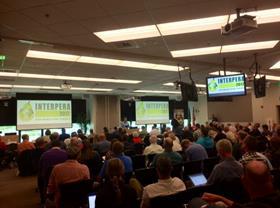
More than 160 participants from 13 countries gathered in Wenatchee, Washington earlier this month for the 10th edition of Interpera international pear conference.
The event, co-organised by the Pear Bureau Northwest and the Assembly of the European Regions Producing Fruits, Vegetables and Ornamental Plants, is an opportunity to share experiences on new varieties, production techniques, pre- and post-harvest quality improvements, trade and consumption patterns.
Global pear production has been steadily increasing, climbing from 15m tonnes in 2002 to 26m tonnes in 2014.
The world’s biggest producer is China (18m tonnes) followed by Europe (2.4m tonnes), Argentina (860,000 tonnes) and the US (830,000 tonnes).
Trade data shows that while world trade increased from 2.2m tonnes in 2005 to 2.7m tonnes in 2015, in Europe sales have fallen during the past 20 years, from 2.585m tonnes in 1995to 2.17m tonnes in 2016.
Global consumption has increased since 2012 and now stands at just over 2kg per year per capita.
However, there is a big imbalance in consumption levels between different countries. In China, for instance, it currently stands at 9.26 kg, while in India the figure is just 0.24 kg.
The conference heard how new promising varieties arriving on the market could help drive future consumption increases.
In particular, red or two-toned pears such as Celina, Carmen Angelys, Sweet Sensation, Xenia, Cepuna, Corina, Gem and Piqua Boo are seen as having good market potential.






No comments yet